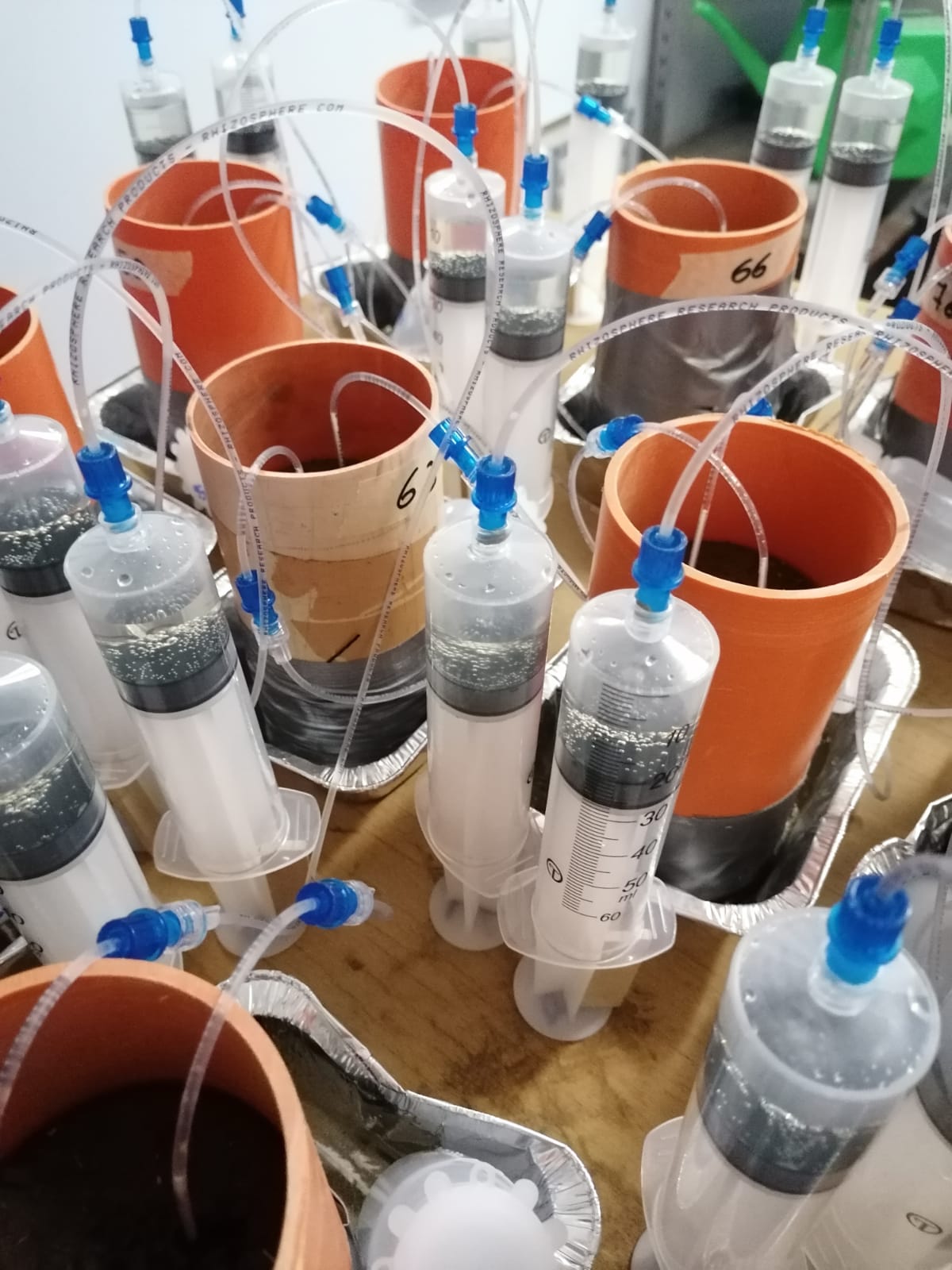In search of a greener fertilizer
 Tomas, our ESR4, is trying to find good organic compounds for elaborating organo-mineral fertilizers (OMFs) as part of his research. An OMF is a mixture of mineral or synthetic fertilizers (MF) with one or more organic fractions (OF). This type of fertilizer has been reported to have a similar nutrient use efficiency that MF alone, but with the benefit of less N leaching.
Tomas, our ESR4, is trying to find good organic compounds for elaborating organo-mineral fertilizers (OMFs) as part of his research. An OMF is a mixture of mineral or synthetic fertilizers (MF) with one or more organic fractions (OF). This type of fertilizer has been reported to have a similar nutrient use efficiency that MF alone, but with the benefit of less N leaching.
Currently, under European law is accepted to use peat or leonardite in the elaboration of the OMF. However, peat extraction is related to multiple environmental problems such as the drainage of peatlands and lowering its water table level. Therefore, to provide a more sustainable OMF is necessary to find OFs that could replace peat in the elaboration of OMFs with the same agricultural advantages.
To substitute peat, the new OF should show high stability over time to reduce the variability in the quality of the final OMF. Materials like compost and biochar can be considered stable organic materials. During composting, the structure of raw organic materials undergoes a decomposition process that progressively slows down. Biochar is produced with pyrolysis that releases the volatile matter in the organic materials, and the C in biopolymers is concentrated in aromatic structures that have a high stability to microbial decomposition. The stability in their structure makes composted or pyrolyzed materials suitable for their usage in OMFs.
Multiple OFs were collected from industries across the Piedmont region (NW Italy) to be studied as possible peat replacements. Additional OFs were received from Salerno-Southern Italy to include a broader range of composted materials to be tested.. Used materials consisted of wood biochar (BC); green compost (GC) based on vegetable residues as grass cuts, pruning, crop residues, or residual pomace; mixed compost (MC) from the organic fraction of municipal waste, anaerobically digested materials, animal waste or agro-industrial waste; peat; leonardite (Leon); vermicompost (VC) of manure and vegetable residues.

All these materials were mixed with MF to create multiple OMFs with a C, N, and P ratio of 7.5-20-10. Newly-developed PMFs were used in an pot incubation test with a calcareous soil to study the release of nutrients. For each treatment, the soil was fertilized to a ratio of 300 Kg N/ha and 150 Kg P205/ha. The soil solution was collected over two months using suction samplers and analyzed for nitrate, ammonium, and phosphate. All the OMFs made with different OF showed the same trend for nutrient release, showing that composts and biochars are suitable to replace peat in the OMFs.
The following step in this research will be selecting materials based on the ease of handling for creating granular OMFs and discarding those that fail to form homogeneous mixtures with the MF. After the creation of prototypes of granular OMFs, agricultural tests will follow to determine if the selected materials incorporate all the desirable properties that an optimal OMF should have.
By Tomas Javier Sitzmann
